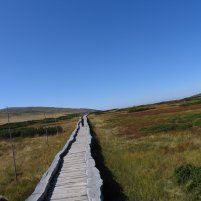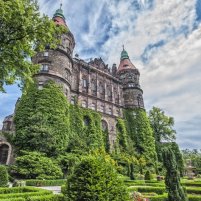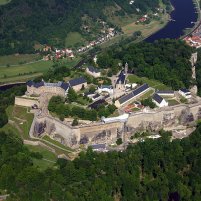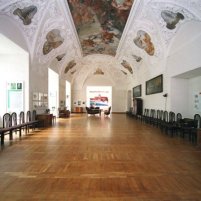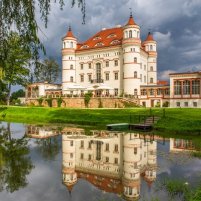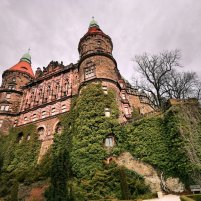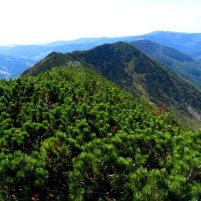See the beautiful Capital of Lower Silesia Wroclaw. Stay at a luxurious palace located at the scenic foothills of Sudetes Mountains !
Lower Silesia region is an area that repeatedly changed hands over the past centuries. It was ruled by the kings of Poland, and Czech Republic as well as the emperors of Germany, Prussia, and Austria. There were also times when Lower Silesia was divided and each of its territories was ruled by a local prince.
Lower Silesia is where the borders of Poland, Germany and Czech Republic meet. For centuries, the neighboring countries struggled for political and economic influence over this region.
Fortunately, during the different past reigns, the region witnessed not only battles and destruction, but also cooperation, cultural exchange and numerous developments in areas ranging from agriculture to the arts.
Lords, aristocracy, and common citizens, who had come from various countries (including the religious immigrants from the Czech Republic, Wallonia and the Netherlands), left behind magnificent works of art, craft and architecture enriching our culture. The multiple peoples of Europe brought along scientific, economic, and industrial solutions as well as adding variety to the Polish cuisine.
Trip info
Destination: Poland, Germany, Czech Republic
Best time to go: June, July, August, September, October
Duration: 10 days
Profile: historical journey through our region. 10 day stay at luxury palace and 4 * hotel in Wroclaw, leisure combined with spa, sightseeing, hiking.
Accommodation: Twin/DBL rooms in 4 star hotel and luxury palace with SPA& wellness facility, swimming pool.
Board: HB (other board type on request)
Group size: 4– 15 people
Clothing: in addition to the usual holiday clothing you must take: sports footwear with thick soles, trekking boots or walking shoes, comfortable clothing, wind and rain resistant jacket, warm jumper or sweater and, just in case, hat and gloves, sun glasses.
Price includes: Transfers from and to the airport, local transportation, assistance of our representative from arrival to departure, mountain guiding service during trek, accommodation in DBL/Twin rooms, full board, snacks, mineral water and isotonic drinks during hike, medical expenses and accident insurance, entry fees.
Price excludes: Flights, local tips, optional excursions/activities/meals/beverages.
Itinerary
DAY 1
Arrival day
Arrival at Wroclaw where our representative will greet you; transfer to the hotel located in Jelenia Góra Valley at foothill of Sudetes Mountains; check-in; welcome and info meeting, free time.
Airport to hotel transfer time around 2hrs.
DAY 2
Day trip around the Jelenia Góra with a lecture on the history and fate of our region from the Middle Ages to the present day. We’ll see monuments of Gothic, Roman to the Baroque and Neoclassicism (min Baroque Churches of Peace – which are the largest in Europe, raised objects in skeletally-timbered construction, moreover, the two objects since 2001 appear on the UNESCO World Heritage Site). We will also see how to turn out the fate of some architectural gems – from beautifully restored palace complexes after sometime fabulous, today like scene from a horror movie, ruined palace Bobrów.
DAY 3
Trip to the Castle Ksiaz – fascinating history, fate and guests of the castle from XIII to this day. Ksiaz Castle is a residential complex located approximately 50 km from our hotel. It was built in the years 1288 – 1292 by Prince Bolko I Surowy – ruler of Swidnicko-Jaworskie Dutchy. In the following centuries was in the hands of the dukes of the Czech and Germany. It was constantly expanded, and from several years is systematically restored. It is the third largest castle in Poland. It hosted the most significant personalities from Poland and other countries like Emperor of Russia Nicholas I Romanov and British Prime Minister Winston Churchill. During World War II the castle was adopted as one of Hitler’s lodging. Also it was a place of storage of the collection of the Berlin State Library.
DAY 4
Trip to the Cistercian Abbey in Lubiaz – the largest Cistercian Abbey in the world and one of the largest and highest -class baroque monuments in Europe. The monastery is the second largest religious building in the world ( the first is a palace – monastery El Escorial in Spain ) . The complex has an area of two and a half times the Wawel Castle and has more than 600 windows. Only the roof area is approximately 2.5 hectares , and the length of the facade is 223 meters. It is the longest Baroque facade in Europe. The abbey was founded in 1163 by Silesian prince Bolesław. He invited the Cistercians of Thuringia to settle in the Lower Silesia . The monastery also developed all the time and reached the peak of its splendor during the reign of the Habsburgs in Silesia. The collapse of the object occurred in 1810 when the Prussian king canceled the convent and adopted the monastery for hospital . Further and total collapse occurred at the end of World War II, when the building was occupied by Soviet troops. It was time of total devastation and plunder. In later years, the monastery served as a warehouse. A thorough renovation began in 1989 and continues today. Currently, they are available for the public the halls and rooms which are the most outstanding monuments of Baroque in the world. Interesting fact is that in 1997 Michael Jackson visited the property during his tour in Poland.
DAY 5
Koenigstein Fortress – on this day we will go to Germany to visit the mountain fortress Koegnistain and to get a boat cruise on the River Elba which flows at the foot of the castle hill . Fortress is an excellent example of European military architecture in the area from the thirteenth to the eighteenth century building was erected on the cliff top at a height of 247 m above the level of the Elba. The first object in the current fortress was fortified castle built by the Czechs in the thirteenth century. The castle was located exactly on the border between the Czech and Westmarch Meissen. At the beginning of the fifteenth century ( 1408, ) ruling Saxon Wettin dynasty took it in his possession . In 1559 started reconstruction of the castle for the fortress , which lasted until 1731. Interesting highlight of the day is that from Poland to Germany and back, we will go through the Czech Republic – so that in one day we will be in three countries. Czech Republic is a country known for its production of fine beers, also on the way back we stop for dinner at one of the many breweries in the region.
DAY 6
Day of relaxation – optional outing to the mountains.
It’s the last day in the palace and Jelenia Góra Valley. Tomorrow the second part of our trip – stay and explore the capital of Lower Silesia, Wroclaw. On the last day it’s good to relax using what it the Palace offers. Pool, spa, resting in the palace garden, from which you can admire the panorama of the mountains. On the other hand, the question arises: to be so close to the mountains and not be in them? We offer 4-5 hour trip without rush and straining forces – entry to the top by chairlift, walk along the ridge above the Snowy Cirque, view the entire Jeleniogórska Valley, the descent down through the Black Cirque. After this excursion we guarantee that our last dinner at palace, around a campfire and barbecue will taste much better.
DAY 7
Wroclaw – a walk around the old town and Ostrów Tumski.
Departure from the palace after breakfast around 09.00. Transfer time to the hotel in Wroclaw approximately 2.5 hours. After arrival, check in and walk around the beautiful old city of Wroclaw. Wroclaw Old Town and its surroundings are a great place for a relaxing walk, and on the occasion to a visit to several unique architectural monuments of Gothic and Baroque. In the walk around the city, we entered visit to the selected sites with a local guide who knows well the history of the town. After a quiet and not overloaded sightseeing, lunch in the proven restaurants in the old town and free time. Recommended and absolutely worth to seeing places are: Wroclaw Old Town Square, Cathedral Island, Market Hall, Hall Leopoldyna of University of Wrocław and walk around the Slodova Island.
Day 8
Wrocław – visit to Panorama of battle in Raclawice, free time.
Panorama of the battle in Raclawice in Wrocław, an impressive relic of 19th-century century mass culture, is one of only few examples of this genre preserved in Europe. The large painting (15x114m) ‚transfers’ the viewer into an altogether different time, a reality of its own, by artfully combining painterly devices (special kind of perspective) and technical effects (lighting, artificial terrain, dark and usually tortuous passage to the viewing platform). Panorama of the Battle of Racławice is the oldest and only extant example of panorama painting in Poland. The project was conceived as a patriotic manifestation commemorating the 100th anniversary of the victorious Battle of Racławice, a famous episode of the Kościuszko Insurrection, a heroic but in the end fallen attempt to defend Polish independence. Over the last two centuries, the object visited so esteemed guests as: Karl Ludwig Habsburg duke of Austria, Franz Joseph I Emperor of Austria, Pope John Paul II, Beatrix Queen of Holland, Albert II King of Belgium. After sightseeing, free time. The neighborhood offers lots of splendid shopping opportunities in delis, boutiques and malls.
Day 9
After two days of walking among the monuments of the Gothic and Baroque periods, its time for outstanding monument of urban architecture from beginning of twentieth century. Centennial Hall is a unique venue on the map of Poland, where history harmoniously interacts with modernity. It was designed by Max Berg, an outstanding city architect, and recognized as one of the top masterpieces of the 20th century architecture. The designer assumed that the Hall was to serve citizens of Wrocław and visitors to Lower Silesia’s capital city, and it continues to perform this function successfully. Multi-purpose space, unusual structure, unique and spacious location represent just a few of its strengths. Centennial Hall complex currently is one of the most desired venues among domestic and foreign organizers of major exhibitions, conferences, cultural, sport and congress events. The Hall’s inscription on UNESCO World Heritage List in 2006 emphasized the rank of this facility. Undoubtedly it is one of the most characteristic flagships of Wrocław in the international scale, and exceptionally magic site in the city where the charts of history record its multi-generational experience. Hall is the main element of the whole expressionist architectural complex, which includes also a Pergola, a Japanese Garden, and surrounded by Szczytnicki Park.
Day 10
Departure day.
After breakfast, check-out, transfer to the airport. Transfer from hotel to airport time: 30-45 minutes (depends on traffic conditions).






